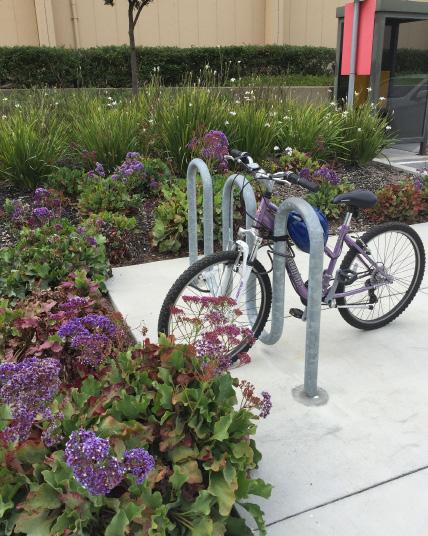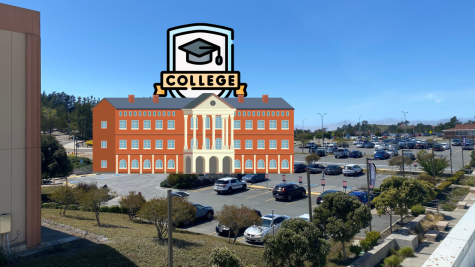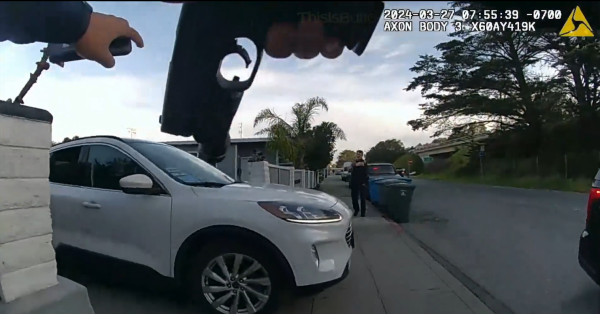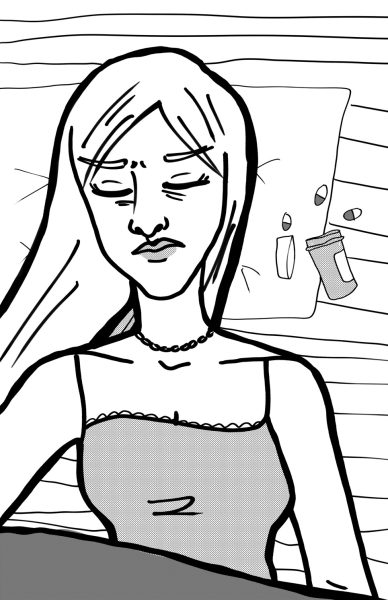Ride safe or die

Laurel B. Lujan/The Skyline View
Bike parked at Skyline bike rack near the bus stop on September 16, 2015.
Do you know what the hardest part of riding a bike is? The pavement.
Maybe you’re not hardcore enough to get into recent health trends such as the Paleo diet or CrossFit, but you may have developed some better eating and exercise habits. Today, more and more people are generally developing a more health-conscious focus.
With this new focus, more citizens are feeling the pressure to get in their daily exercise. This could be why more bicyclists have been on the road. According to the Census Bureau’s 2011 American Community Survey, more than 777,000 people use bicycles as a method of transportation.
Skyline College has contributed to this number by making improvements for student bicycle commuters. In the 2013 Skyline Sustainability Plan, it was written that the college installed additional bicycle racks on campus to encourage the use of bicycles and public transportation.
While bicycle riding can be a great form of transportation and exercise, it is important to be careful. In one study done by the Journal of the American Medical Association, from 1998-2013, bicycle injuries increased 28 percent and hospitalizations from bicycle injuries increased 120 percent. One could attribute these high numbers to the growing number of bicyclists on the road.
“I can only guess as to the cause, perhaps more people are biking and more people are texting while driving,” said Emily Risk, a nurse at the Skyline College Health Center.
Terri Sofarelli, Skyline College’s physician’s assistant, had similar thoughts.
“I think the numbers are increasing because of two things,” Sofarelli said. “There is an increase in the number of people riding their bikes and there is an increase of distracted drivers and cyclists; they are using hand held devices while driving/riding and less aware of their surroundings.”
To prevent injury, Risk said she would advise riders to follow the rules of the road.
“Take a free bicycle safety class,” Risk said. “The bicycle coalition in SF has free classes posted on their web site. And most importantly wear a helmet that fits.”
“For ways on how people can reduce their risk of being in a bike accident, people should avoid busy streets, light up, take up the whole lane, signal turns, re-think the use of iPhones or music, and ride as if you were invisible,” Sofarelli said.
According to the Insurance Institute for Highway Safety, wearing a helmet can reduce the risk of head injury by 85 percent. While wearing a helmet and following the rules of the road can decrease the likeliness of injury or death from riding a bicycle, it still may not be enough.
Many city streets were not originally designed with the bicyclist in mind. However, there are many projects being worked on which could change roadways to be more cyclist friendly.
Safe Routes to School is a program designed to make bicycling to school a safe choice for children. The project focuses on improving safety and accessibility to schools and educating children on safe bicycling strategies. Grant funding is given to cities so they can implement this program and make the city a safer place to live by combating the issues surrounding bike safety.
“Grants fund education and encouragement of students and parents, assignment of a full time school traffic officer, design and construction of infrastructure improvements, and evaluation of the program for effectiveness. These efforts reduce traffic congestion, pollution, and make cities a better place to live,” said Jocelyn Walker, assistant engineer, who is currently managing this project in San Mateo.
Another program concerned with the topic of bicycle safety is Vision Zero. Vision Zero is an initiative to eliminate deaths and serious injuries from roadways by engineering safer streets, enforcing road laws, and educating the public about pedestrian and bicyclist safety. Vision Zero began in Sweden in 1997 and since then Sweden and other European countries that have taken on the initiative have reduced their traffic fatalities by almost 50 percent. Close to home, cities in San Francisco, San Mateo, and Santa Clara counties have adopted the initiative in a move toward safer streets.
With local communities doing what they can to keep bicyclists safe it is now up to bicycle riders themselves to do their part in taking care of their safety. Being healthy does not have to be dangerous.

















